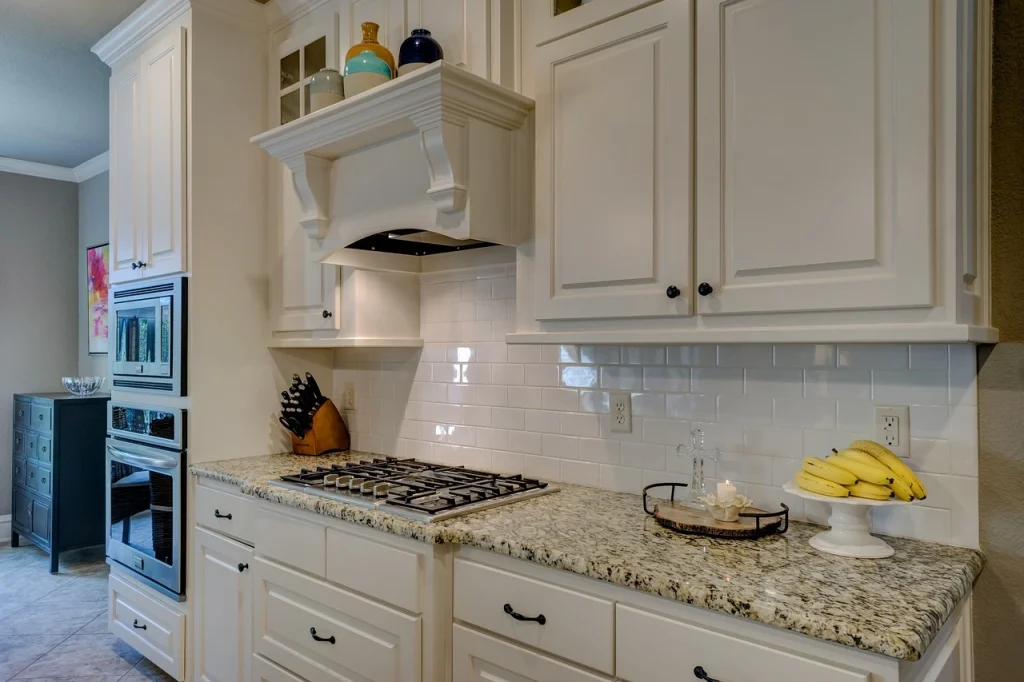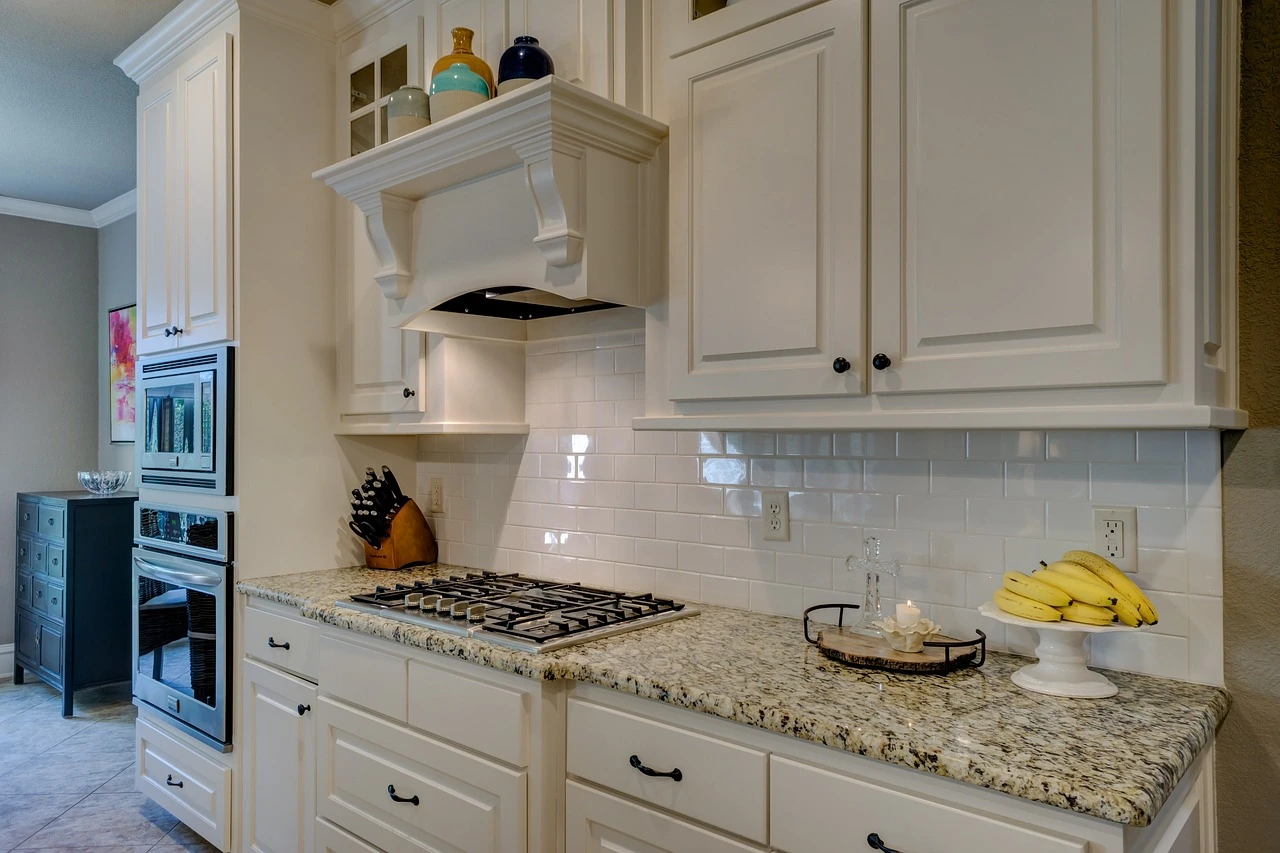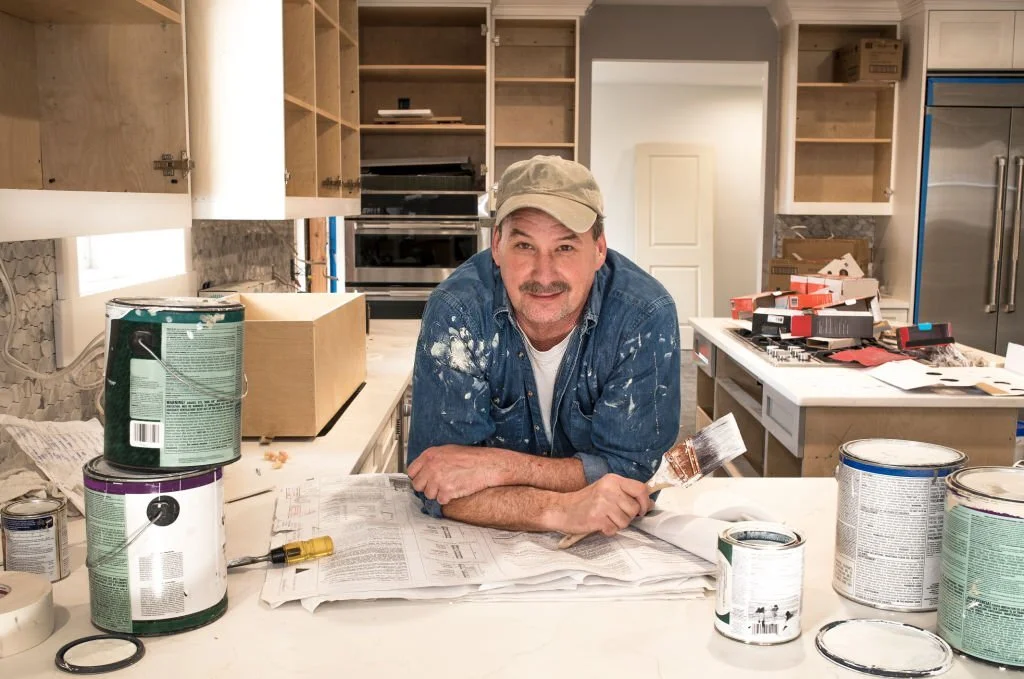
The good news is that keeping your painted cabinets from sticking is entirely achievable with the proper techniques and know-how.
Picture this: You’ve spent hours updating your kitchen cabinets with a fresh, stylish paint job. But as you open them, you face an annoying problem—they’re sticking together!
As a pro painter, I’ve seen this too often. Don’t worry; I’m here to help you tackle this issue.
In this simple guide, I’ll share the secrets to achieving non-sticky painted cabinets, perfect for beginners.
I’ll cover every step, from essential prep to final touches that make a difference. By the end, you’ll create a stunning, durable finish that impresses everyone.
- 1. Consider the Weather Conditions
- 2. Prepare the Surface
- 3. Clean and Degrease Your Cabinets
- 4. Sand Those Cabinets for a Smooth, Stick-Free Finish
- 5. Prime Your Cabinets for Maximum Adhesion and a Flawless Look
- 6. Selecting the Best Paint for Your Cabinets
- 7. Paint Your Cabinets Like a Pro with These Techniques
- 8. Enhance Your Paint with Additives
- 9. Ensure Adequate Drying Time and Install Cabinet Door Bumpers
- FAQ
- Conclusion
1. Consider the Weather Conditions
Unfavorable weather conditions can slow down the drying process of paint on your cabinets.
To prevent your cabinet paint from being sticky, paint when the weather is neither too hot nor too cold. Also, ensure the humidity levels are according to the paint brand.
Above all, avoid trying to paint during and after rainy weather. Rain increases humidity levels in the air. Due to this, your cabinet paint will take more time to dry. And if you don’t give the paint enough time to sit and dry, the paint surface will become sticky.
So always try to paint when the temperature is between 40 to 90 degrees Fahrenheit.
2. Prepare the Surface
Make sure you have prepared the cabinet surface beforehand. This is the most vital step in the painting process that can’t be missed.
If you come across any cracks or holes in the cabinet surface, make sure you fill them in with the proper filling material. Once the filling is done, let it sit and dry for a few hours.
When it is completely dried up, use a damp cloth to remove all the debris from the cabinet. If the cabinet surface is even and clean, the paint won’t accumulate and turn tacky.
3. Clean and Degrease Your Cabinets
Before even thinking about grabbing that paintbrush, it’s crucial to clean and degrease your cabinets. Over time, kitchen cabinets tend to accumulate dirt, grease, and grime, which can hinder paint adhesion and cause your cabinets to stick together.
To clean your cabinets effectively:
- Use a powerful degreaser or trisodium phosphate (TSP) to cut through grease and grime. Dilute the solution according to the manufacturer’s instructions and use a sponge or cloth to scrub the cabinets thoroughly.
- Rinse with water to remove any residue left by the cleaning solution.
- Let the cabinets dry completely before moving on to the next step. This may take several hours, but it’s an essential part of ensuring your cabinets are ready for paint.
4. Sand Those Cabinets for a Smooth, Stick-Free Finish
Sanding is a vital step in the cabinet painting process. Not only does it create a smooth surface, but it also promotes better paint adhesion, making it less likely for your cabinets to stick together. Follow these steps for optimal results:
- Choose the right sandpaper grit: Start with a 220 grit sandpaper for initial sanding, then move on to a finer 320 grit sandpaper for the final sanding.
- Sand in the direction of the wood grain: This helps to avoid creating scratches or gouges in the wood that can be difficult to cover up later.
- Wipe off the dust: Use a tack cloth or a damp cloth to remove any dust left behind after sanding. This step is essential, as lingering dust can mix with your paint and create an uneven, unattractive finish.
5. Prime Your Cabinets for Maximum Adhesion and a Flawless Look
The right primer can make all the difference in ensuring your painted cabinets don’t stick together. Here’s what you need to know about selecting and applying primer:
- Choose an oil-based or shellac-based primer: These types of primers offer maximum adhesion and are less likely to cause sticking issues. Make sure to match the primer type to the paint type you’ll be using for the best results.
- Use a quality brush or foam roller: Investing in good-quality tools will make it easier to achieve a smooth, even coat of primer.
- Apply thin, even coats: Avoid applying too much primer at once, as this can lead to drips and an uneven finish. Instead, apply thin coats and allow each coat to dry according to the manufacturer’s instructions.
6. Selecting the Best Paint for Your Cabinets
Choosing the right paint for your cabinets is crucial for preventing sticking and achieving a long-lasting, beautiful finish. Here’s what to consider when selecting paint for your cabinets:
- Types of paint: There are three main types of paint suitable for cabinets – water-based acrylic, oil-based enamel, and alkyd enamel. Each type has its own set of benefits and drawbacks, so consider factors such as drying time, durability, and ease of application when making your choice.
- Durability: A paint’s durability will directly impact how well it holds up to daily wear and tear. Opt for a paint that’s specifically designed for cabinets or high-traffic areas to ensure maximum durability.
- Finish: Consider the desired finish of your cabinets – satin, semi-gloss, or gloss. Generally, a semi-gloss or gloss finish is more resistant to sticking, as well as easier to clean.
7. Paint Your Cabinets Like a Pro with These Techniques
Now that you’ve chosen the perfect paint, it’s time to apply it. Follow these expert tips for a smooth, stick-free finish:
- Use a quality brush or foam roller: Just as with primer, investing in a quality brush or foam roller will help you achieve a smooth, even coat of paint.
- Apply thin, even coats: Avoid applying too much paint at once, as this can lead to drips and an uneven finish. Instead, apply thin coats and allow each coat to dry according to the manufacturer’s instructions.
- Sand lightly between coats: Use 320-grit sandpaper to sand lightly between coats of paint. This will help to ensure a smooth, even finish and promote better adhesion of subsequent coats.
8. Enhance Your Paint with Additives
Additives can be a game-changer when it comes to preventing your painted cabinets from sticking. Here’s what you need to know about using additives:
- Choose the right additive: Use Floetrol for water-based paints and Penetrol for oil-based paints. These additives are designed to improve the flow and leveling of paint, minimize brush marks, and extend drying time to prevent sticking.
- Follow the manufacturer’s instructions: Be sure to read the instructions on the additive packaging and add the recommended amount to your paint. Too little or too much can impact the effectiveness of the additive.
9. Ensure Adequate Drying Time and Install Cabinet Door Bumpers
Giving your cabinets enough time to dry is essential for preventing sticking. Here’s how to ensure proper drying and further protect your cabinets:
- Follow the manufacturer’s recommendations: Always follow the drying time recommendations provided by the paint manufacturer. Rushing this process can result in sticky cabinets and a less durable finish.
- Consider environmental factors: Temperature, humidity, and ventilation can all impact drying time. If you’re painting in a humid environment, consider using a dehumidifier or increasing ventilation to speed up the drying process.
- Install cabinet door bumpers: Adding adhesive silicone, felt, or rubber bumpers to your cabinet doors can help prevent sticking and paint damage. These bumpers create a cushion between cabinet surfaces, reducing friction and providing an extra layer of protection.
FAQ
Q: What are the reasons behind painted cabinets sticking?
A: The sticking of painted cabinets can be attributed to several factors such as the use of low-quality paint, not allowing the paint to dry completely, and fluctuations in temperature and humidity.
Q: What steps can I take to prevent my painted cabinets from sticking?
A: To avoid painted cabinets from sticking, it’s crucial to use high-grade paint and primer. Let the paint dry thoroughly before closing the cabinets. Also, maintaining a consistent temperature and humidity in your home can help.
Q: What is the recommended drying time for painted cabinets to avoid sticking?
A: Painted cabinets should ideally be left to dry for a minimum of 24 hours before they are closed. However, certain types of paint might require a longer drying period. Always follow the instructions provided by the paint manufacturer.
Q: Can applying a sealer help in preventing painted cabinets from sticking?
A: Yes, applying a sealer can indeed prevent painted cabinets from sticking. The sealer forms a protective layer that stops the paint from sticking to itself or other surfaces.
Q: Which type of paint is less likely to cause cabinets to stick?
A: Oil-based paints are generally recommended for cabinets as they dry to a hard finish that is less prone to sticking. However, good quality latex paints with a semi-gloss or gloss finish can also be effective.
Q: How can I rectify a painted cabinet that has started sticking?
A: If a painted cabinet starts sticking, you can try to lightly sand the sticking area and then apply a thin coat of non-stick spray or wax. If this doesn’t resolve the issue, repainting the cabinet might be necessary.
Q: Does the level of humidity influence painted cabinets and lead to them sticking?
A: Yes, high levels of humidity can lead to painted cabinets sticking. The moisture in the air can interfere with the proper drying of the paint, which can result in sticking issues.
Q: Can changes in temperature lead to painted cabinets sticking?
A: Yes, significant changes in temperature can lead to painted cabinets sticking. The wood’s expansion and contraction due to temperature changes can cause the paint to crack and stick.
Q: How can I ensure the longevity of the non-stick quality of my painted cabinets?
A: Regular cleaning and dusting can help maintain the non-stick quality of your painted cabinets. Also, avoid slamming the doors and drawers as this can cause the paint to chip and stick.
Q: What are some common errors to avoid when painting cabinets to prevent them from sticking?
A: Some common errors include not cleaning the cabinets thoroughly before painting, not using a primer, not allowing the paint to dry properly, and using low-quality paint.
Conclusion
I’ve covered a lot of ground in this comprehensive guide, so let’s recap the key takeaways to ensure your painted cabinets won’t stick:
Key takeaways
- Mind weather conditions: Paint when temperatures are between 40-90°F and humidity levels align with paint recommendations.
- Prepare surfaces: Fill cracks or holes, let filler dry, and clean cabinet surfaces for even paint adhesion, preventing tackiness.
- Properly clean and degrease your cabinets to remove any dirt, grease, and grime that may hinder paint adhesion.
- Sand your cabinets to create a smooth surface and promote better paint adhesion.
- Apply the right primer to ensure maximum adhesion and a flawless look.
- Select the best paint for your cabinets, considering factors such as durability, finish, and compatibility with your primer.
- Use proper painting techniques to achieve a smooth, even finish and avoid sticking issues.
- Incorporate additives like Floetrol or Penetrol to enhance the flow, leveling, and drying time of your paint.
- Ensure adequate drying time and install cabinet door bumpers to provide extra protection against sticking and paint damage.
By following these expert tips and techniques, you’ll be well-equipped to tackle your cabinet painting project with confidence, knowing that your cabinets will look beautiful and function perfectly without sticking. Happy painting!



